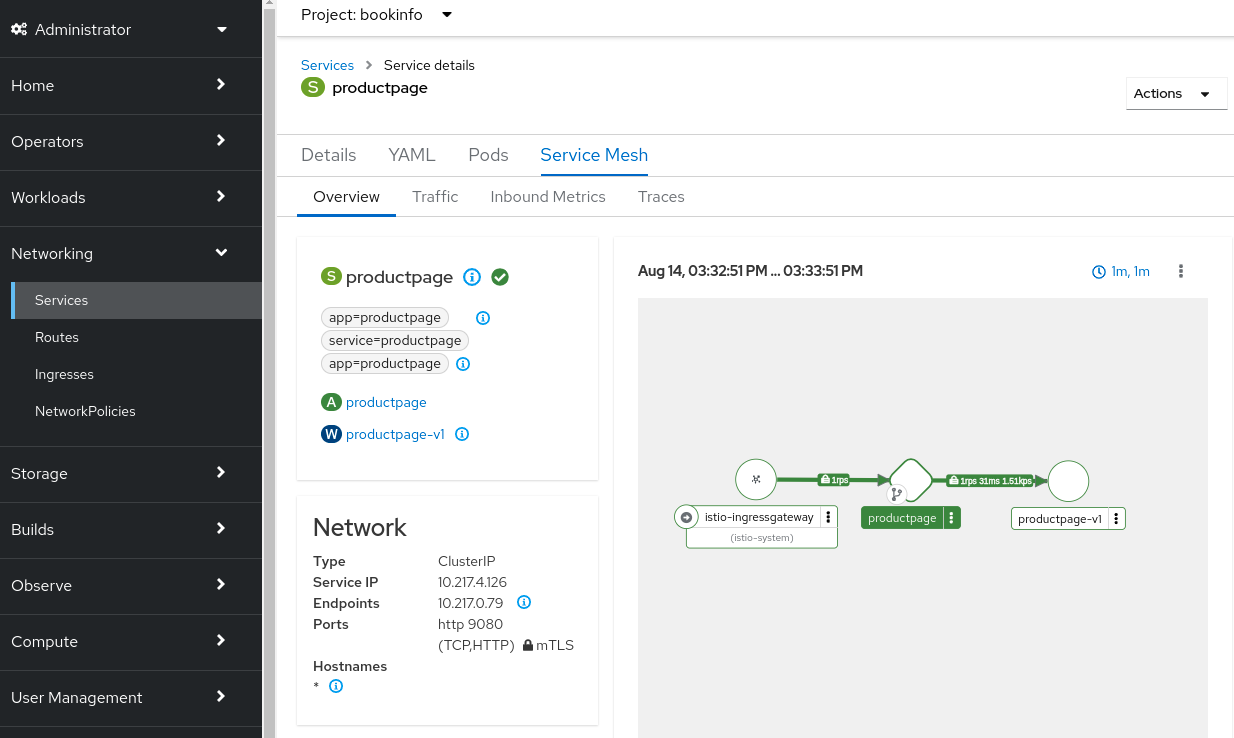This is the multi-page printable view of this section. Click here to print.
OSSMC
1 - OSSMC User Guide
The OpenShift Service Mesh Console (aka OSSMC) is an extension to the OpenShift Console which provides visibility into your Service Mesh. With OSSMC installed you will see a new Service Mesh menu option on the left-hand side of the Console, as well as new Service Mesh tabs that enhance existing Console pages such as the Workloads and Services pages.
The features you see described here are very similar to those of the standalone Kiali Console. In fact, you can still access the standalone Kiali Console if you wish. This User Guide, however, will discuss the extensions you see from within the OpenShift Console itself.
Overview
The Overview page provides a summary of your mesh by showing cards representing the namespaces participating in the mesh. Each namespace card has summary metric graphs and additional health details. There are links in the cards that take you to other pages within OSSMC.
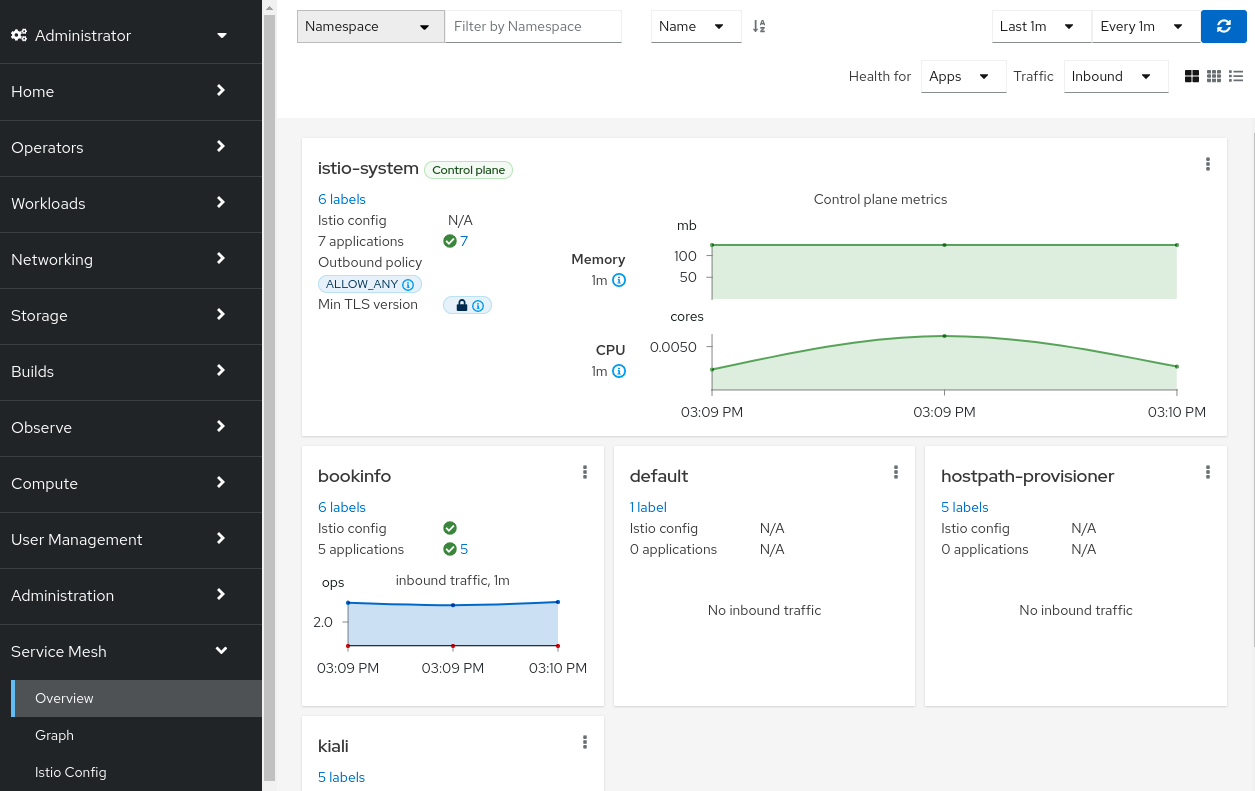
Graph
The Graph page provides the full topology view of your mesh. The mesh is represented by nodes and edges - each node representing a component of the mesh and each edge representing traffic flowing through the mesh between components.
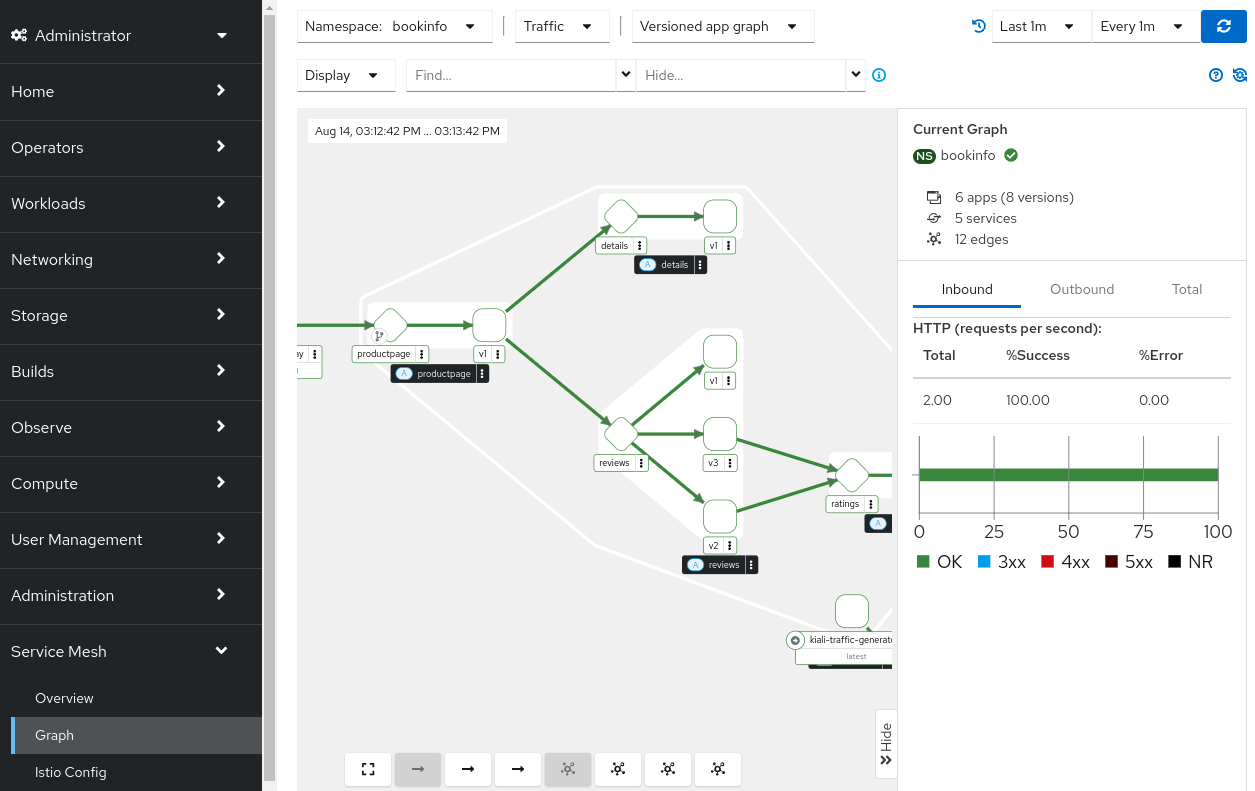
Istio Config
The Istio Config page provides a list of all Istio configuration files in your mesh with a column that provides a quick way to know if the configuration for each resource is valid.
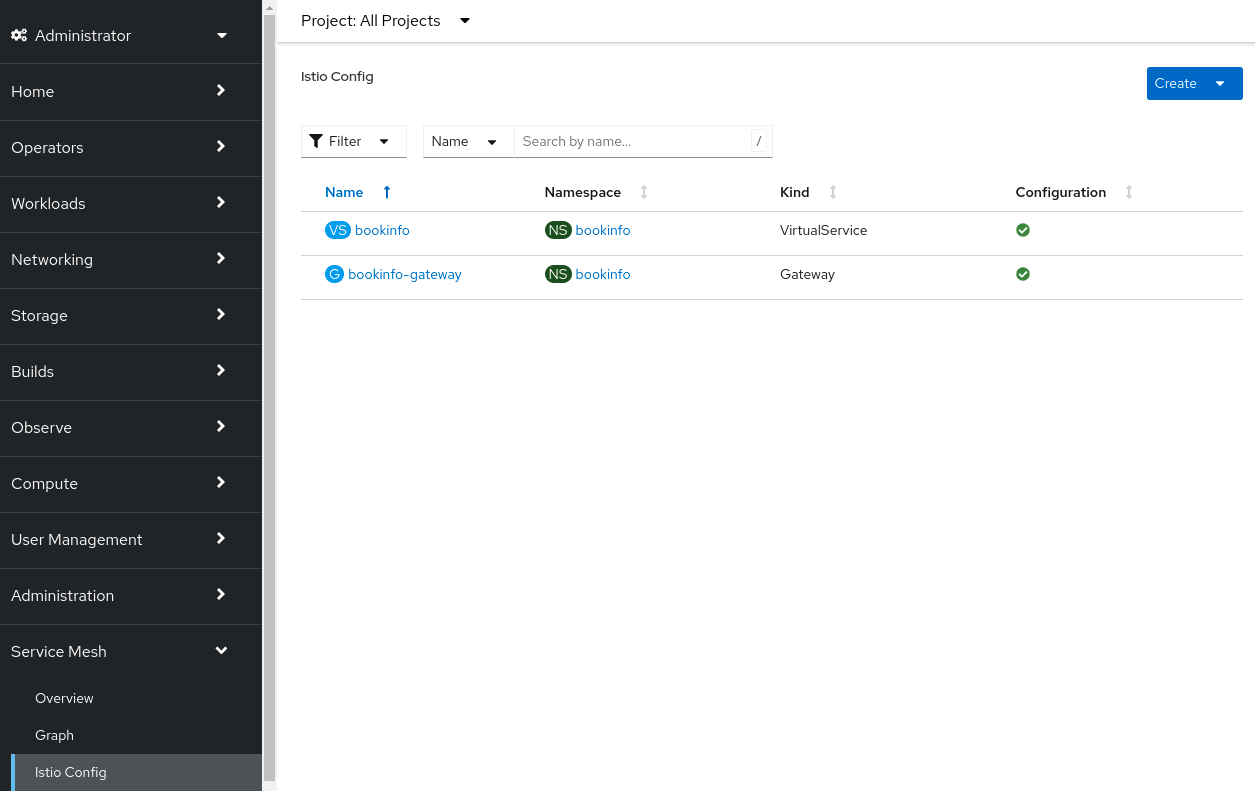
Workload
The Workloads view has a tab Service Mesh that provides a lot of mesh-related detail for the selected workload. The details are grouped into several sub-tabs: Overview, Traffic, Logs, Inbound Metrics, Outbound Metrics, Traces, and Envoy.
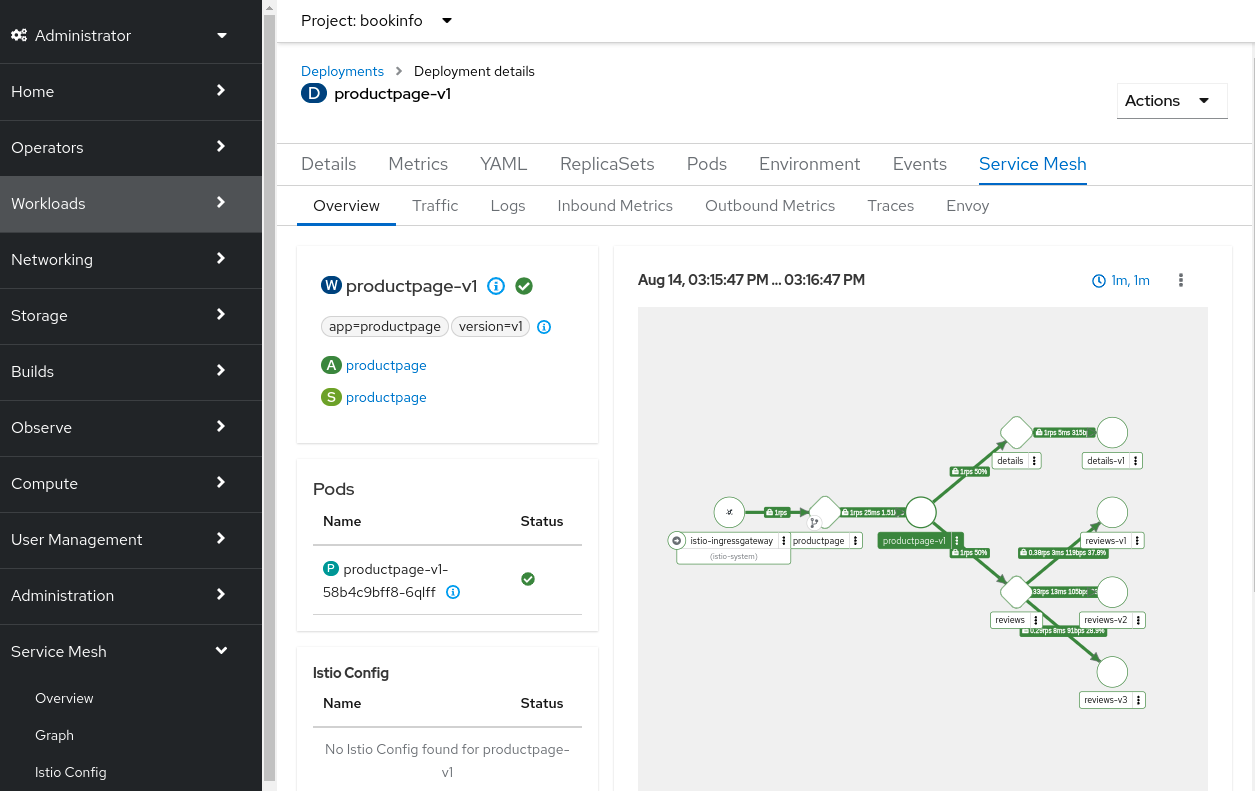
Workload: Overview
The Workload: Overview sub-tab provides a summary of the selected workload including a localized topology graph showing the workload with all inbound and outbound edges and nodes.
Workload: Traffic
The Workload: Traffic sub-tab provides information about all inbound and outbound traffic to the workload.
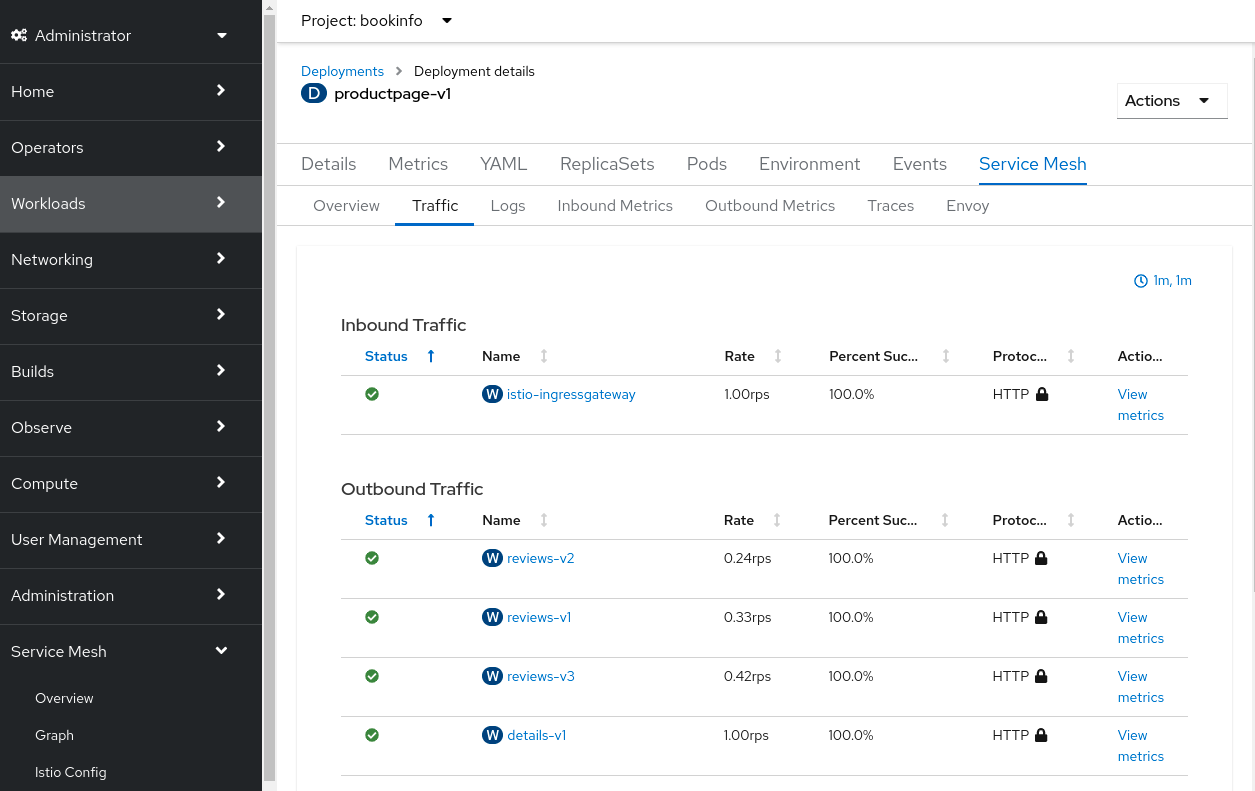
Workload: Logs
The Workload: Logs sub-tab provides the logs for the workload’s containers. You can view container logs individually or in a unified fashion, ordered by log time. This is especially helpful to see how the Envoy sidecar proxy logs relate to your workload’s application logs. You can enable the tracing span integration which then allows you to see which logs correspond to trace spans.
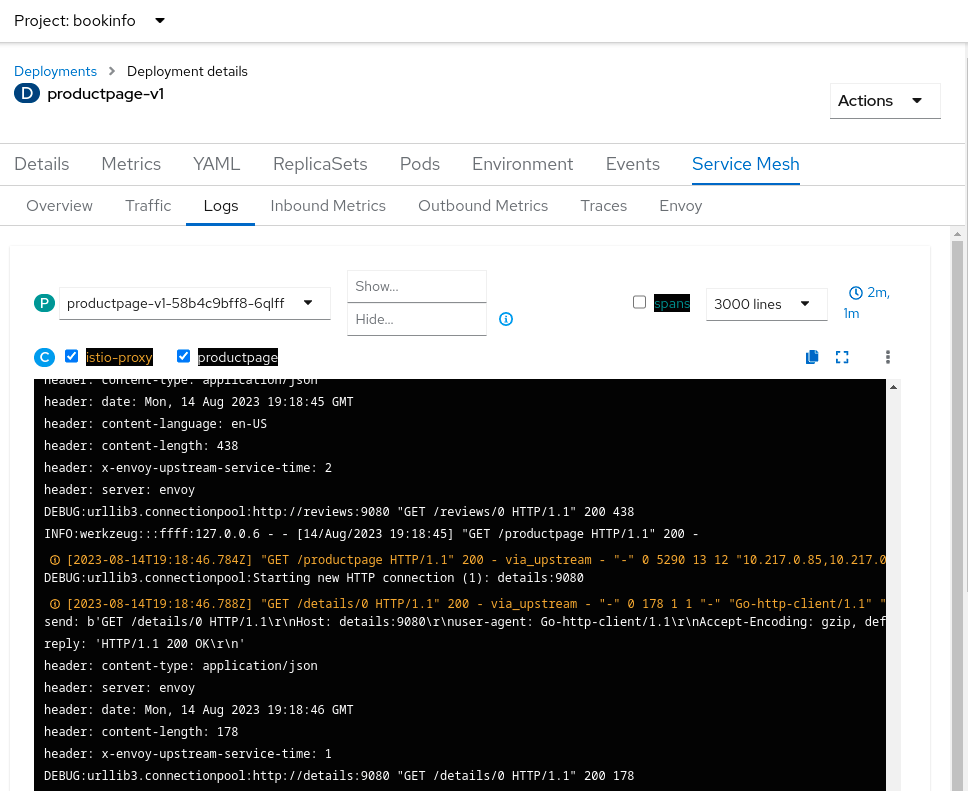
Workload: Metrics
You can see both inbound and outbound metric graphs in the corresponding sub-tabs. All the workload metrics can be displayed here, providing you with a detail view of the performance of your workload. You can enable the tracing span integration which allows you to see which spans occurred at the same time as the metrics. You can then click on a span marker in the graph to view the specific spans associated with that timeframe.
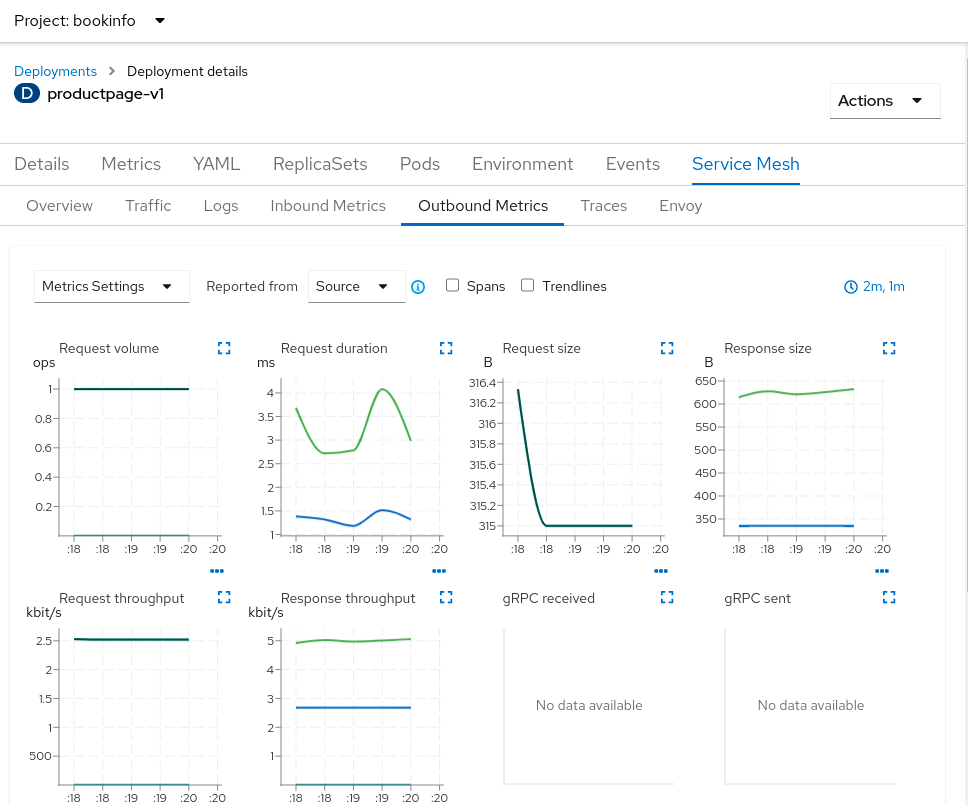
Workload: Traces
The Traces sub-tab provides a chart showing the trace spans collected over the given timeframe. Click on a bubble to drill down into those trace spans; the trace spans can provide you the most low-level detail within your workload application, down to the individual request level.
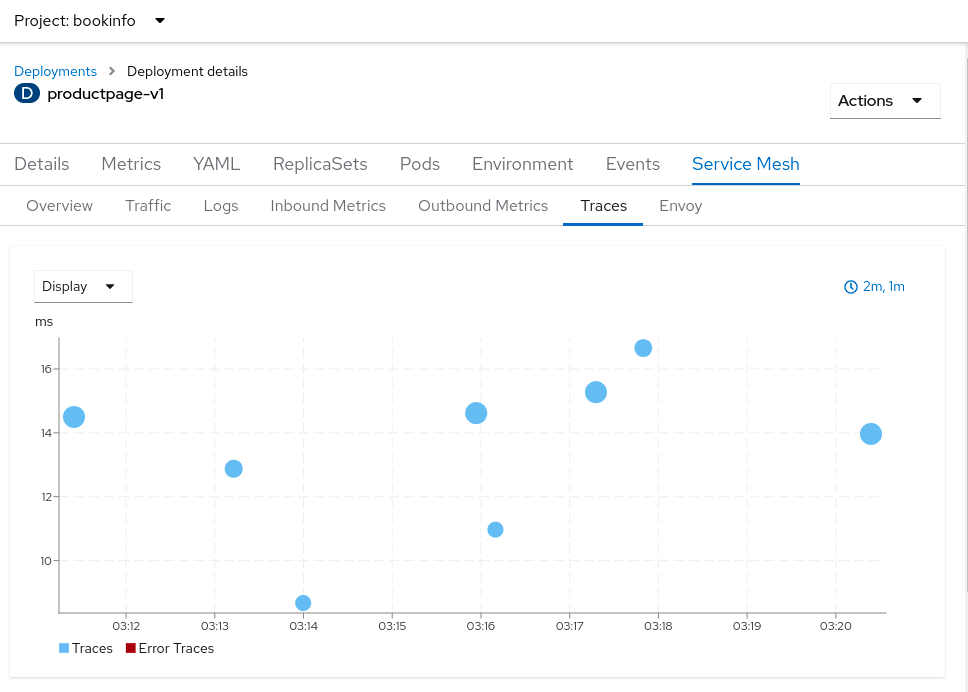
The trace details view will give further details, including heatmaps that provide you with a comparison of one span in relation to other requests and spans in the same timeframe.
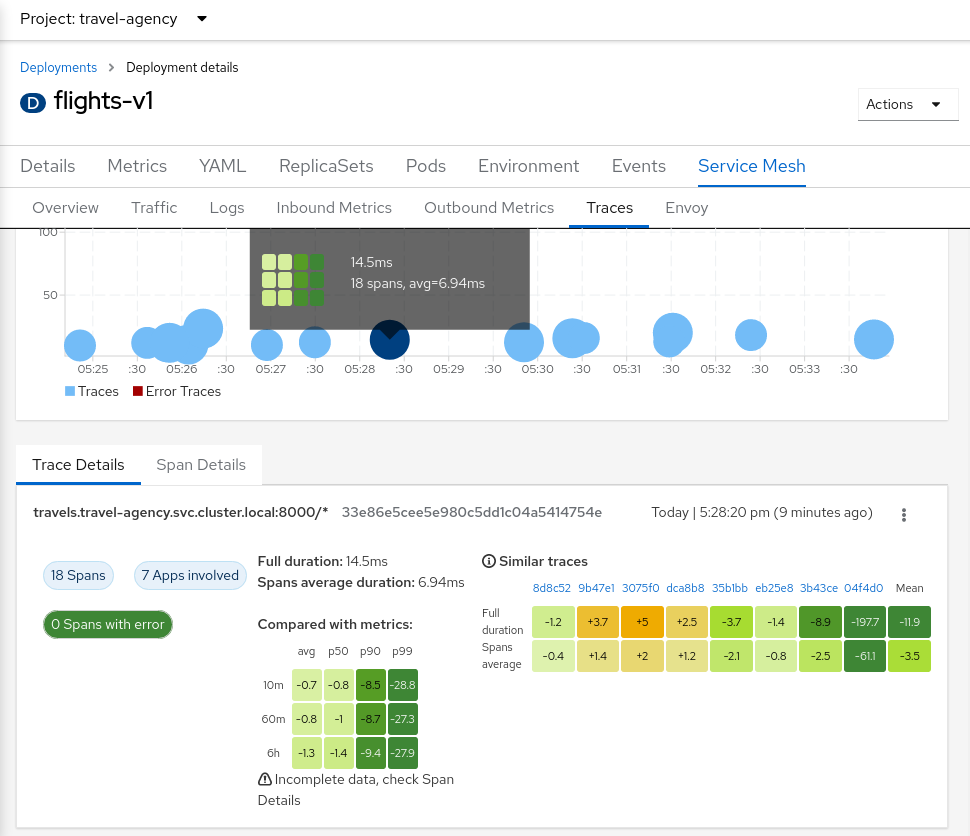
If you hover over a cell in a heatmap, a tooltip will give some details on the cell data:
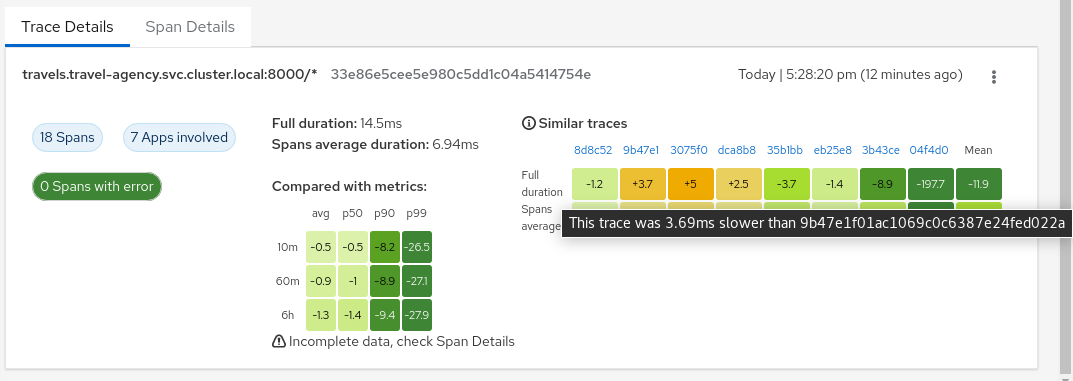
Workload: Envoy
The Envoy sub-tab provides information about the Envoy sidecar configuration. This is useful when you need to dig down deep into the sidecar configuration when debugging things such as connectivity issues.
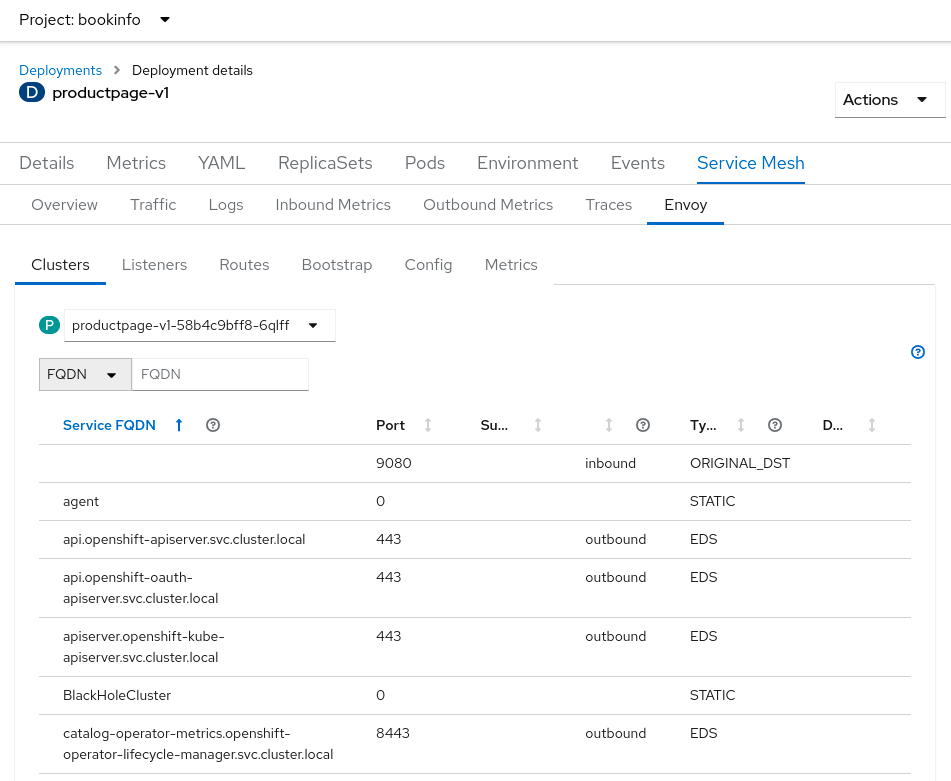
Services
The Services view has a tab Service Mesh that provides mesh-related detail for the selected service. The details are grouped into several sub-tabs: Overview, Traffic, Inbound Metrics, Traces. These sub-tabs are similar in nature as the Workload sub-tabs with the same names and serve the same functions.
